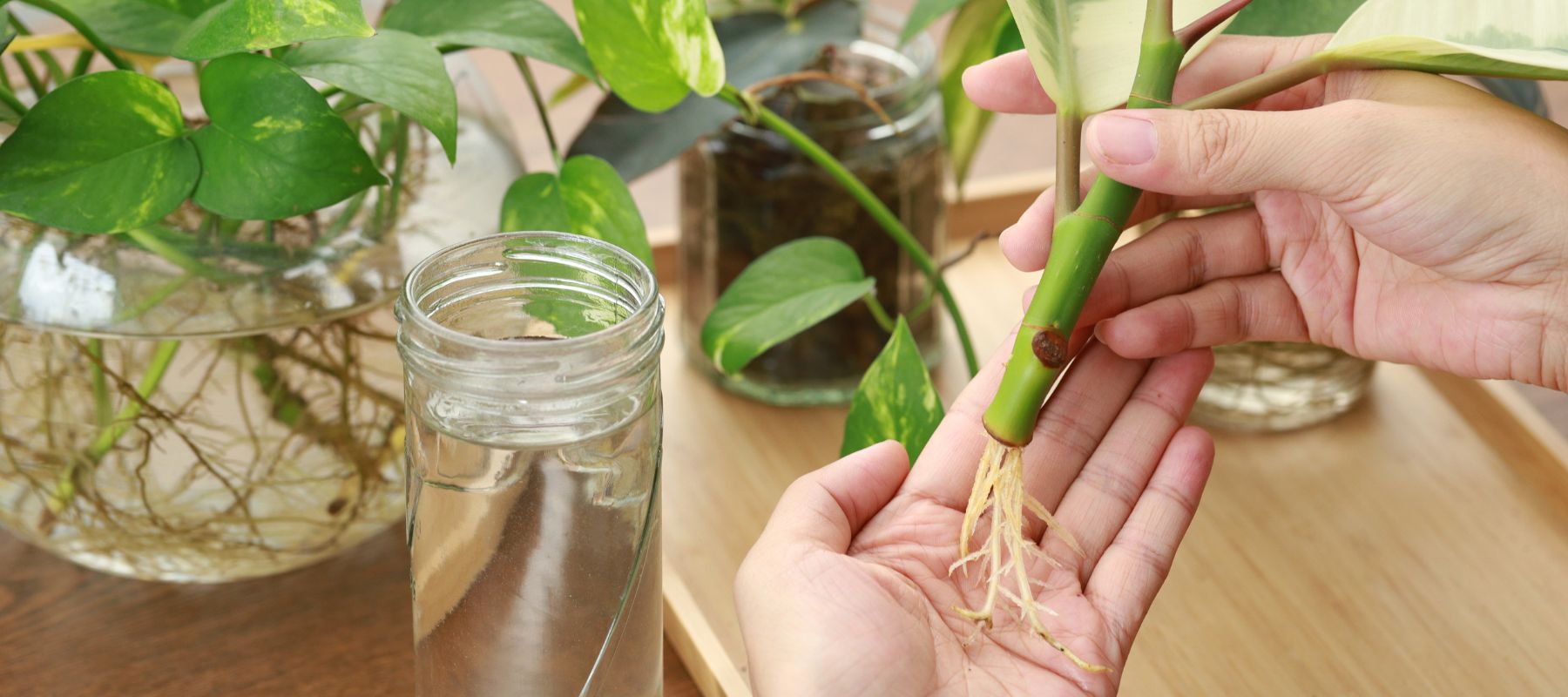Lesson 3 - Cuttings Propagation

Propagating from cuttings is a way of growing plants that you like characteristics of, they are a clone of the mother stock (original plant). A cutting is a small section of plant material that you propagate to grow up a new plant which is the same as its parent.
There are many ways to take cuttings and different times of the year to propagate from cuttings.
Softwood cuttings – these are best taken in spring. They are the new growth of the plant and are full of vigour therefore, they tend to develop roots quite quickly if kept moist and warm. An example of this is the tips of Rosemary.
Semi hardwood cuttings are taken after a plant has flowered in Summer and the wood is aging. These cuttings usually take quite well and don’t need any additional heat.
Hardwood cuttings require a little bit more patience as they don’t strike as quickly. Taken late summer and early autumn, they develop over winter and are ready to plant in Spring. Use some rooting hormone as these are a little harder to propagate. They don’t require as much water, but they do need to develop in a sheltered position. Examples of these are fruit trees.
To take a cutting make sure your plant material is well hydrated, take cuttings in the morning before the day heats up and evaporation occurs. When you collect your cuttings store them in water until ready to use. It is best to set up your propagation trays before collecting material to ensure the time from cutting to planting is as short as possible, reducing shock to the cutting.
Identify the position of nodes along the stem of the plant. Nodes are the points at which the leaves form and surprisingly when these nodes are stripped of leaves and placed in soil, this is also where roots develop. Cuttings should be about 10cm long and your first cut is just below the bottom node, which will be planted. Then carefully move up the stem and cut just above the node where the leaves are. If you are propagating a plant with large leaves, cut the leaves in half to reduce the size of the leaf surface area where water will be lost. Carefully remove leaves if they are attached to the node that you wish to plant in the soil by cutting them off carefully or pinching them off.
Rooting hormones aren’t always necessary, however, to ensure successful propagation it is a good idea to give them a go. If you have enough cuttings, prepare half a tray with and half without and see what your success rate is. Planting many cuttings together encourages a mini microclimate. If any cuttings turn brown or fail to thrive, remove them.
Create a mini glass house by covering the cutting and soil with a drink bottle with the bottom removed or a glass bowl. A good way to cover several trays is to turn a plastic semi-translucent tub upside down. Make sure the surface that you place your propagation trays on is warm or that you use a heat mat.
To check that your cuttings have developed roots, gently pull one out of the tray after three weeks. If your cuttings are growing, you can pot them up into individual pots or get them ready for planting in the garden by taking them through the process of acclimation. To acclimatise your plants place them outdoors in warm but shady spot for a few hours each day for about a week and then overnight when temperatures are not too cold. This process is called hardening off.
Further learning
- Soft and Hardwood Cuttings - Gardening Australia
- DIY Greenhouses – Gardening Australia